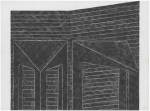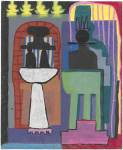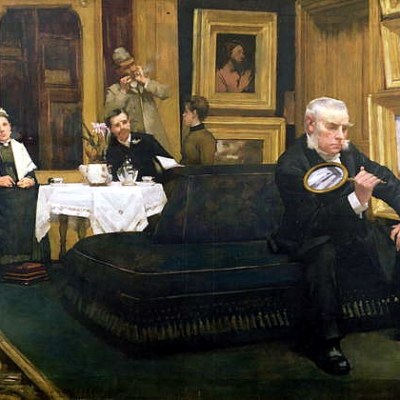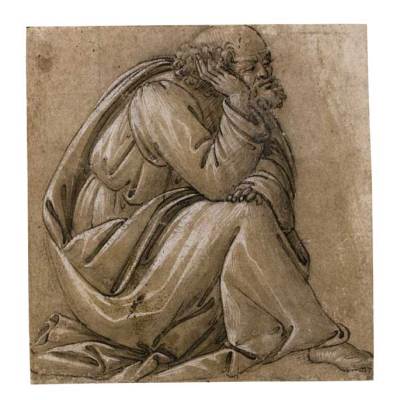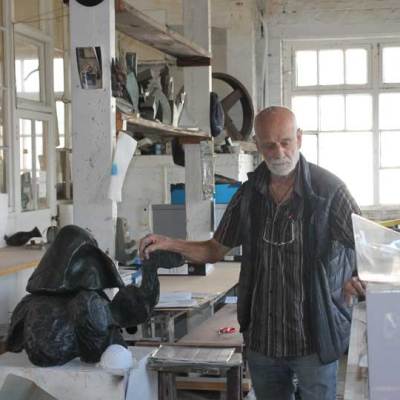You may have seen, or no doubt read about Dock, Phyllida Barlow’s monumental installation in Tate Britain’s Duveen Gallery; these works are some of the most remarkable sculptures ever exhibited on such a scale in a British gallery. They’re a reverse image of London’s present riverside construction boom, a solemn Götterdämmerung of flotsam and jetsam.
Barlow’s sculpture is remarkable, but it’s far from the whole story. As ‘Fifty Years of Drawings’, a new exhibition at Hauser & Wirth illustrates, she is also a prolific draughtsman. The show, which spans from Barlow’s days as a student at Chelsea to the present, invites the inevitable temptation to compare and contrast. How, the spectator will immediately ask, do these comparatively tiny works on paper feed into an installation like Dock? But as you sink deeper into Hauser & Wirth’s Mayfair gallery, the desire to contextualise is lost. The drawings have the power to astonish on their own.
Installation view, ‘Phyllida Barlow. Fifty Years of Drawings’, Hauser & Wirth, London, England, 2014 © Phyllida Barlow. Courtesy the artist and Hauser & Wirth. Photo: Alex Delfanne

As others have noted, many of the drawings share the architectural qualities of her sculptures. But Barlow clearly relishes the freedom that working on paper affords her. Unconstrained by the limiting physical properties of sculpture, she lets rip with formally precise but structurally improbable shapes and scenarios.
Work from the 1960s and early ‘70s is tentative, transparently in thrall to Cubism and Op-Art. But already, there’s something distinct about them; in 7 Bathing Hut, for example, black rectangle frames and tight scribbles of crayon at different angles suggest something kinetic and unstable, reminiscent of the frenzied bustle of a nightclub.
Barlow proceeded to refine this sense of movement into something slow, deliberate and altogether more impressive. A series of heavy black and white shapes made between 1977 and 1981 have the menace of a boa constrictor advancing slowly towards its prey. Looking harder to try to fathom why this is, it becomes clear that every single stroke of charcoal is as considered and methodical as a scientific diagram.
Lily Le Brun has noted on this website that photographs of Dock fail to translate much of what makes the work so compelling. On a much quieter scale, the same is true of Barlow’s drawings: the digital reproductions on this page give little sense of their formal ingenuity. You need to stand in front of them.
The more recent material turns unexpectedly to a more representational style, and is no less fascinating. An acrylic work on paper from 2001 appears to depict the underside of a motorway bridge at night, showing illuminated industrial latticework. There are halogen streetlights swathed in baby pink halos of light visible over the precipice and, in the distance, sinister lights pick out the framework of electricity pylons – it’s almost as if she finds this stuff too easy. But the foreground is more confusing: step back from the frame and you’ll notice a return to the art-historical references of her earliest drawings. This time Surrealism gets the nod. This work, along with many others, could have been titled with the post-script ‘after De Chirico’.
The exhibits here reveal greater depths with every viewing. (I have just returned from my fourth visit.) They may, due to their form and comparatively small scale, be classed as ‘minor’ works – but whether taken as a companion exhibition to Dock or assessed on its own terms, ‘Fifty Years of Drawing’ makes just as good a case for Barlow as a major artist.
‘Phyllida Barlow: Fifty Years of Drawings’ is at Hauser & Wirth, London, until 26 July.

